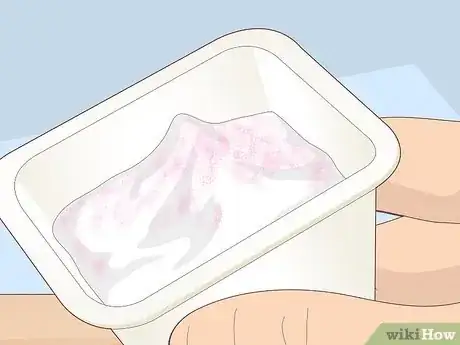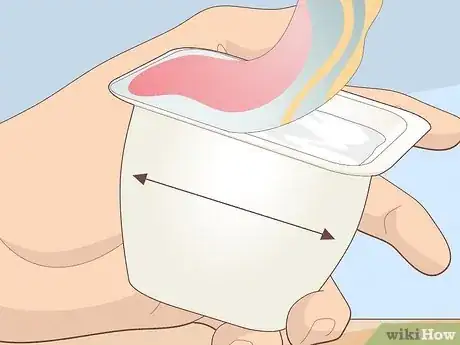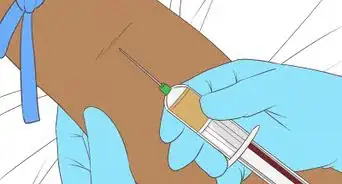This article was co-authored by Abyssinia Campbell and by wikiHow staff writer, Amber Crain. Abyssinia Campbell is an Executive Chef and the Owner of Chef Abyssinia, Personal Chef and Catering. With over ten years of experience, she specializes in catering, event planning, menu development, meal planning, and food business operations. When it comes to cooking, Chef Abyssinia enjoys using fruits, vegetables, healthy food alternatives, and local farm-fresh ingredients. She holds a BASc in Culinary Arts and Food Service Management from Johnson and Wales University.
There are 11 references cited in this article, which can be found at the bottom of the page.
This article has been viewed 54,855 times.
You're about to dig into a container of yogurt—until you notice the expiration date printed on it. Whether that date is coming up fast or already past, you want to make sure the yogurt is safe to eat. But how do you know for sure? In this article, we'll cover all the signs of spoiled yogurt so you can enjoy it without fear (or toss it out if you need to). We'll also explain what the date on the container really means and what happens if you accidentally eat bad yogurt.
Steps
Signs of Spoiled or Bad Yogurt
-
1There’s a lot of water on the surface. It’s normal for the whey to separate a little, so if you see a thin layer of liquid on top, it’s probably fine—just stir the liquid in (or pour it out) before you eat the yogurt. If there’s a puddle or a thick layer of liquid, it’s more likely that your yogurt is bad.[1]
- Don’t toss it just yet—check for other signs of spoilage first.
- It doesn’t matter what kind of yogurt you’re eating—regular, nonfat, or Greek. The signs of spoilage are the same.[2]
-
2The texture is lumpy instead of smooth. Stir the yogurt with a spoon and check out the texture. If you notice lumps or chunks, or if the texture seems gelatinous and the yogurt is hard to stir, it’s past its prime and starting to go bad.[3]Advertisement
-
3The yogurt smells sour, weird, or gross. Put your nose close to the yogurt and breathe in slowly. Good yogurt will smell fresh, or barely have a smell at all. Spoiled yogurt will smell sour, rancid, yeasty, or just plain wrong.[4]
- Maybe you aren’t sure if the yogurt smells weird or not. If you see other signs of spoilage, throw it out.
-
4There’s mold or discoloration on the surface. This may seem like a no-brainer, but take a closer look anyway—sometimes moldy spots are really small! If you see any pink, gray, or fuzzy-looking patches on your yogurt, throw it out. You definitely don't want to eat mold—it can make you sick.[5]
-
5It has a sour, stale, or unusual taste. We don’t recommend taste-testing it, but what if you accidentally ate a spoonful before noticing something was off? Or maybe it looked and smelled it okay, so you went for it. The flavor will give it away immediately—spoiled yogurt will taste sour and unpleasant.[6]
- Eating a spoonful is unlikely to make you sick, so don’t worry if you accidentally ate a little bit.
-
6The container looks bloated or swollen. If the plastic container looks warped, the yogurt may have been exposed to heat or humidity—so it’s almost certainly bad. If the airtight seal is broken, definitely toss the yogurt out—it could be contaminated.[7]
-
7The yogurt has been sitting out for more than 2 hours. Maybe you accidentally left your groceries sitting on the counter—it happens! If it's been 2 hours or less, just stick the yogurt in the fridge immediately. Sitting out at room temperature may have shortened its shelf life, though, so eat it sooner rather than later.[8]
- It's difficult to know just how much shorter the shelf life will be if you leave yogurt out at room temperature, so be sure to evaluate it for signs of spoilage before you dig in.
- That said, the warmer the temperature, the faster it will spoil. For example, if you left yogurt out in the heat (90 °F (32 °C) and up) for more than an hour, throw it away.
References
- ↑ http://www.eatbydate.com/dairy/yogurt-shelf-life-expiration-date/
- ↑ https://cleanplates.com/everyday-cooking/tips/how-long-greek-yogurt-safe/
- ↑ https://www.doesitgobad.com/does-yogurt-go-bad/
- ↑ http://www.eatbydate.com/dairy/yogurt-shelf-life-expiration-date/
- ↑ https://chewtheworld.com/how-long-can-yogurt-sit-out/#tab-con-4
- ↑ https://www.usda.gov/media/blog/2016/03/25/protecting-your-family-food-spoilage
- ↑ https://www.eatright.org/food/planning-and-prep/smart-shopping/food-shopping-safety-guidelines
- ↑ https://www.usdairy.com/news-articles/how-long-can-yogurt-sit-out
- ↑ https://www.doesitgobad.com/does-yogurt-go-bad/
- ↑ https://ask.usda.gov/s/article/How-long-can-you-keep-dairy-products-like-yogurt-milk-and-cheese-in-the-refrigerator
- ↑ https://www.hsph.harvard.edu/nutritionsource/food-features/yogurt/
- ↑ https://www.tastingtable.com/834763/these-signs-mean-your-yogurt-has-gone-bad/
- ↑ https://ask.usda.gov/s/article/How-long-can-you-keep-dairy-products-like-yogurt-milk-and-cheese-in-the-refrigerator
- ↑ https://www.mayoclinic.org/diseases-conditions/food-poisoning/symptoms-causes/syc-20356230





































































